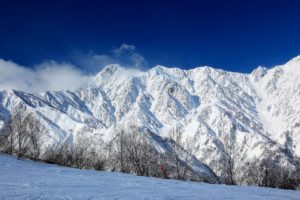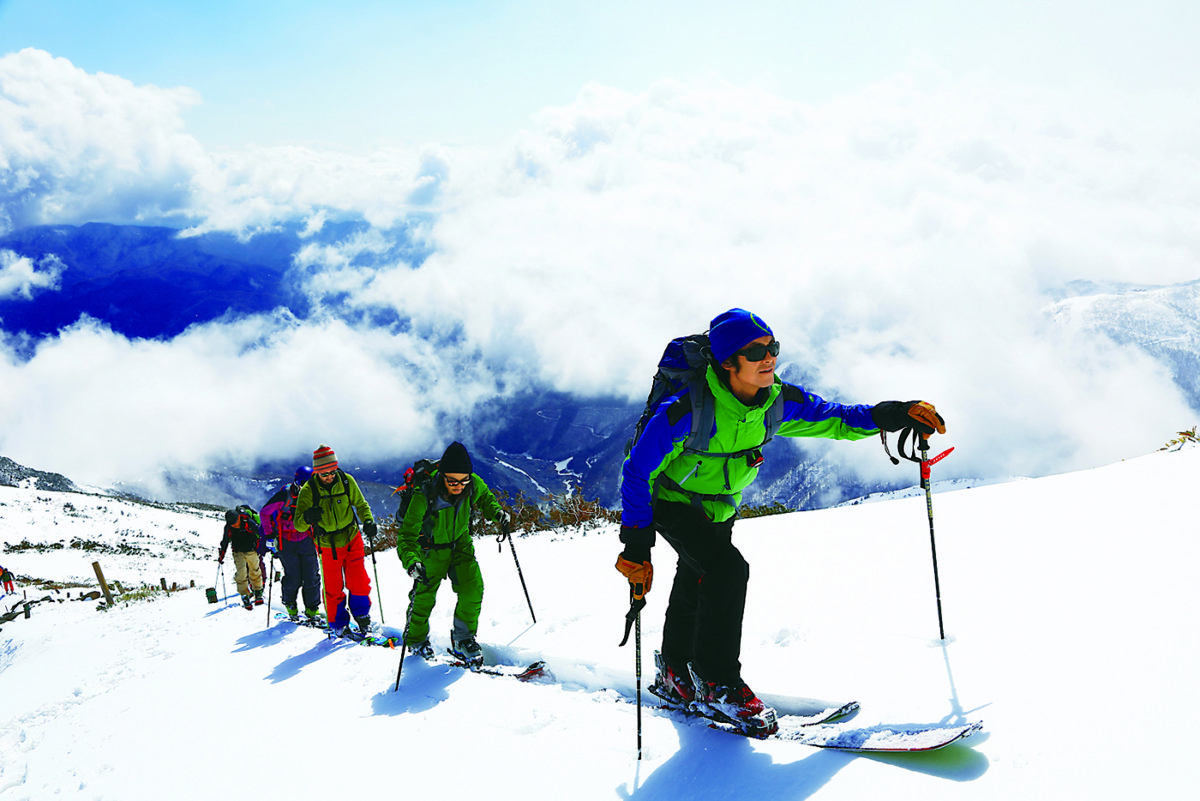Avoid the risks of snowy mountains and enjoy backcountry safely
Unlike managed ski resorts, pristine snowy mountains carry many risks. As a general rule, you should avoid traveling alone, and having friends or acquaintances who go with you will not avoid danger. The guide club covers not only those who have never backcountry, but also those who have anxiety and obstacles in their actions in places they are visiting for the first time.
Backcountry guides ensure as much safety as possible during activities in the snowy mountains. Guides with Japan Mountain Guides Association ski guide (JMGA) qualifications are generally highly skilled in guiding because they are trained and experienced on a daily basis. Besides, they are natural skiers and snowboarders who just love to ski.
With a guide in the backcountry, you can focus on skating
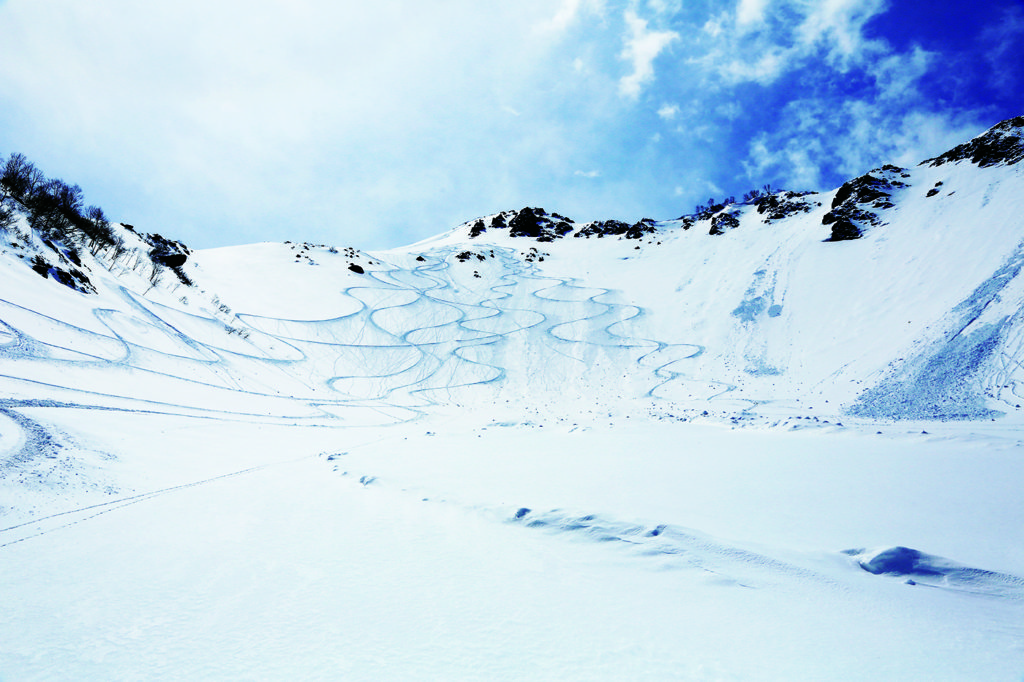
The greatest advantage of participating in a guided tour is that you can concentrate on skating. You can also get lectures on how to walk on the slopes so that you don't get tired, and you can also get advice on how to slide according to the snow conditions when you slide. Even if the conditions are bad, a guide who knows the topography and weather conditions will help you reach slopes that are difficult to hit on your own. As a guide who regularly visits the site, he can guide you to the safest and best slopes of the day with the information that you can have.
Also, by going to guide clubs in different places at different times, you can learn the characteristics of the snow and topography of the area, and learn how to set a safety margin for each person. Therefore, when you enter the guide club, you should take the initiative to observe the behavior of the guides. What do you do when you get to the field, where do you put your backpack when you put on skins, what route do you choose when you climb a slope? Every action has its own reason. By chewing and understanding it in yourself, it becomes your own backcountry knowledge and experience.
What is a backcountry guide club?
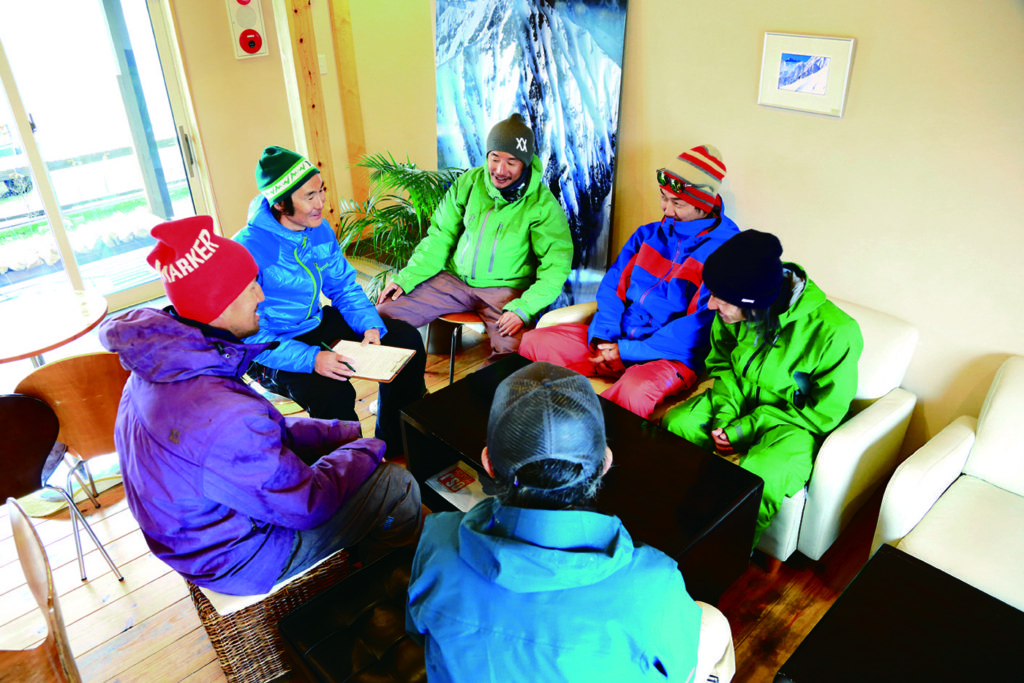
- I don't have fat skis, is that okay?
-
Also available for rental!
As long as you have the right technique, you can ski powder regardless of the type of equipment you use. However, if you want to enjoy deep snow in high season in comfort, don't hesitate to rent one. Some guide clubs also rent skis, so it's a good idea to take advantage of that.
It is preferable to have bindings that allow you to climb, but even if you don't have snowshoes, you can carry your skis up the mountain.
- What equipment do I need? Is it not enough to just use sliding equipment?
-
Safety gear is required even on guided tours.
an avalanche beacon, shovel, and probe, is essential for tours. Even if you don't have one, don't worry, the guide clubs that host tours often have rental equipment available. Some guide clubs also offer rentals of backpacks, skins, snowshoes, and sliding equipment.
- What should I prepare other than gliding equipment?
-
In addition to gliding equipment and safety gear, the required gear is as follows:
- Backpack : Something that has the ability to attach skis or snowboards.
- Activity food : Food that is easy to eat during breaks or during activities. Onigiri, bread, etc. that can be bought at a convenience store are sufficient.
- Drinks : Warm drinks in a water bottle that can be kept warm are best. Please note that bottled water may freeze while you are out in the middle of winter.
- Goggles, sunglasses ...what you usually use when skiing on the slopes is sufficient. Use sunglasses when climbing. It is recommended to have spare goggles and sunglasses on hand.
- Clothing : Clothing that you normally wear on the slopes is sufficient. However, it is best to have a quick-drying base layer, a warm mid-layer such as fleece, and waterproof and breathable outerwear. It would be better to have a beanie, balaclava, neck tube, etc.
It is best to prepare the above items in advance before participating. Some places rent backpacks, so it's a good idea to check in advance.
- I have never used safety gear
-
There is a training session on how to use it before the tour.
There's no point in renting gear if you don't know how to use it. On many beginner tours, participants practice using the equipment before going on the tour. In particular, the ``beacon search'' technique, in which beacons are buried in the snow, is something that repeaters always practice before the tour.
- I'm not sure if I can ski...
-
You can have fun if you can control the slope at a ski resort!
When signing up for a tour, participants are asked to report their backcountry experience and skiing skills, and participants are divided into groups based on their answers, so it is rare for experts and beginners to be grouped together.
There are also tours for first-time guides, and if the conditions are right, almost anyone can ski powder comfortably. However, some guide clubs do not offer tours for beginners, so be sure to check the details of the tour when applying.
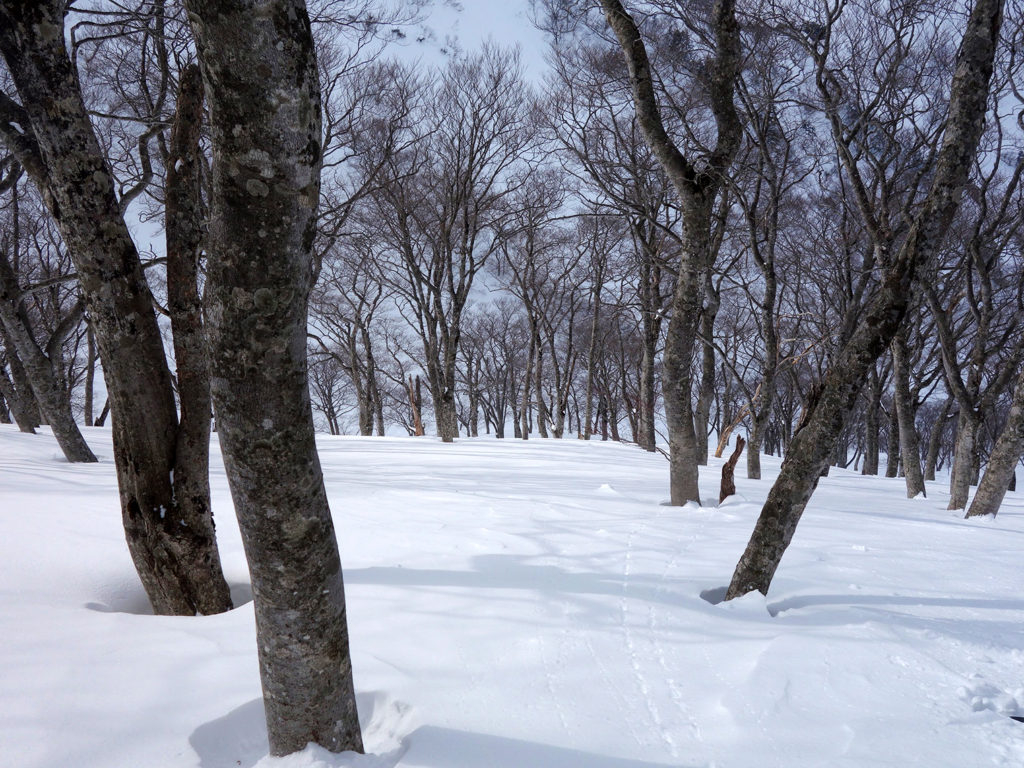
- How long is the activity and hike time?
-
For first-time tours, the average activity time is 4 to 5 hours, and the average hiking time is about 1.5 hours.
Activity and hiking times vary greatly depending on the mountain range you ski on and the nature of the tour. Tours for first-time participants are set at a leisurely pace, so don't worry.
- I can't imagine hiking up. What if I can't climb...
-
As long as you climb at a pace that keeps you out of breath, you'll be fine!
Guided tours often have two people: a lead guide and a tail guide.
The lead guide takes into account the group's differences in physical strength and physique, and adjusts the range of action, climbing time, rest time, etc. Therefore, please rest assured that even if you are late, you will not be left behind. It's natural for beginners to not know their own pace.
A good rule of thumb is if you get out of breath while climbing, it's a sign that you're going too fast. It doesn't matter how slow you climb, the basic thing is to keep climbing at a speed that doesn't stop. I don't want to push myself beyond my physical strength, thinking that I have to walk as hard as I can so as not to inconvenience others. There are other ways to carry a backpack and stockwork that will make you feel less tired. Beginner's tours will be conducted while passing on this know-how, so you may want to consider participating from there first.
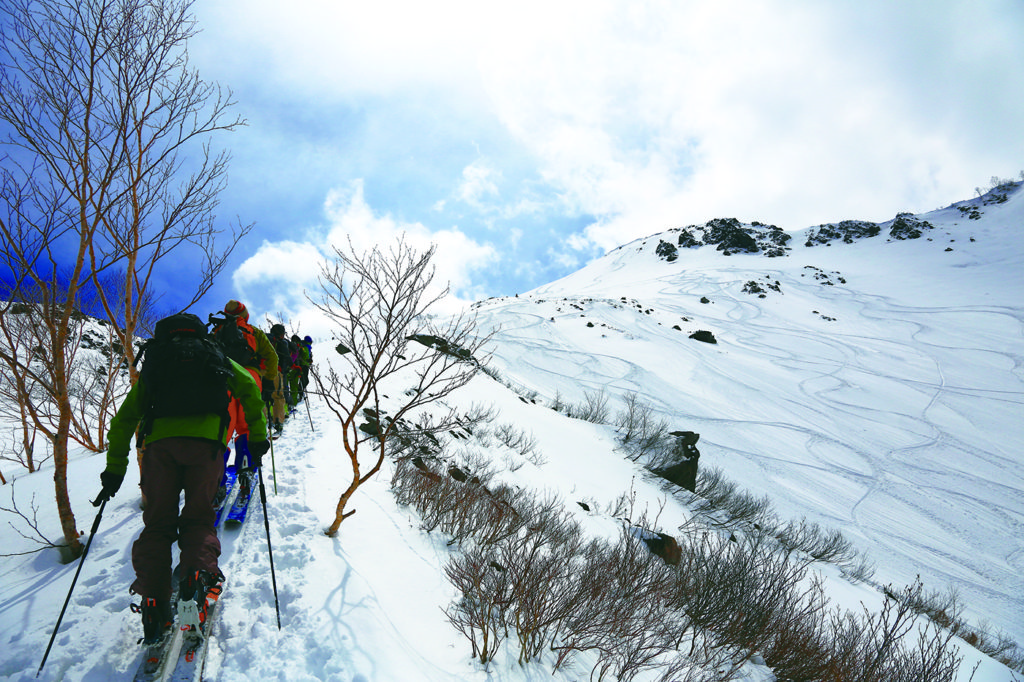
- Will you never get lost?
-
You can't completely eliminate risk in the backcountry.
"Absolutely not" cannot be said. On tours, guests and guides work together to reduce risks. Guests do not ski at their own discretion or convenience, and guides guide guests on routes that maximize their enjoyment while avoiding danger.
In the backcountry, you need to always be aware of danger and be prepared for anything to happen. There are various dangers in the backcountry, including avalanches, falls and slides, cracks and snow bridges, obstacles such as standing trees, rocks, and fallen trees, and weather conditions.
- Can the person at the guide grab tell me a lot of things before joining the tour?
-
It is best to clarify any questions or concerns you may have before participating.
Most guide clubs have a website where you can make inquiries. Nowadays, there are many ways to feel free to address your doubts and concerns, including contacting us through our homepage, email, and SNS. Asking over the phone is also an effective method. However, there are many tour guides on Saturdays, Sundays, during the day, and in the evening, so it would be best to avoid those times.
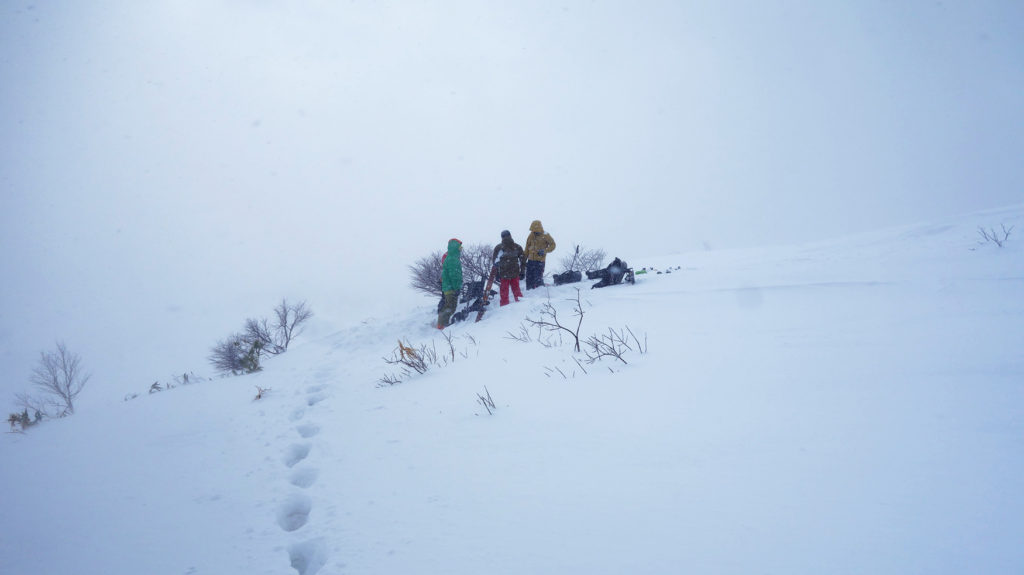
STEEP introduces backcountry guide clubs across the country by area. Please use this as a reference when going into the backcountry.
